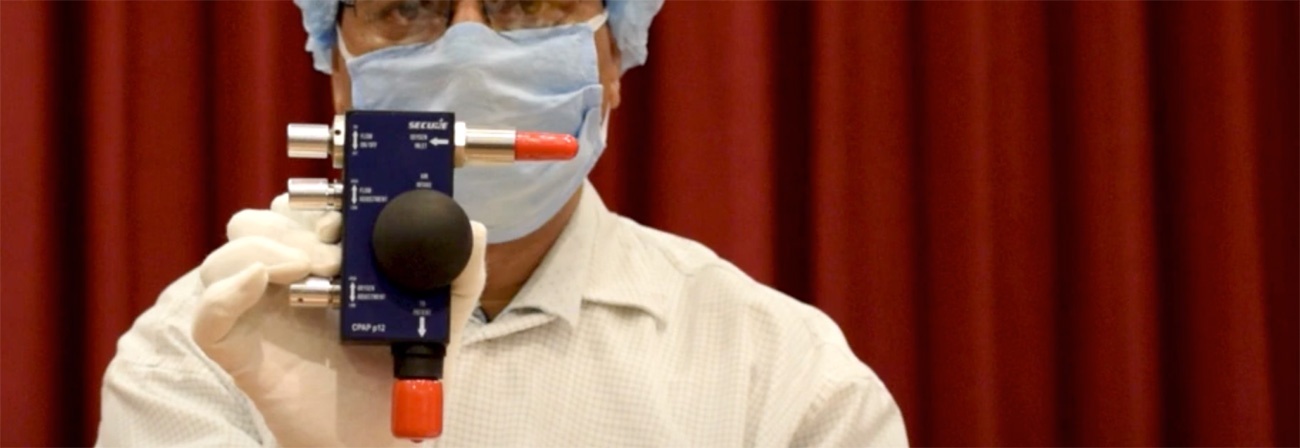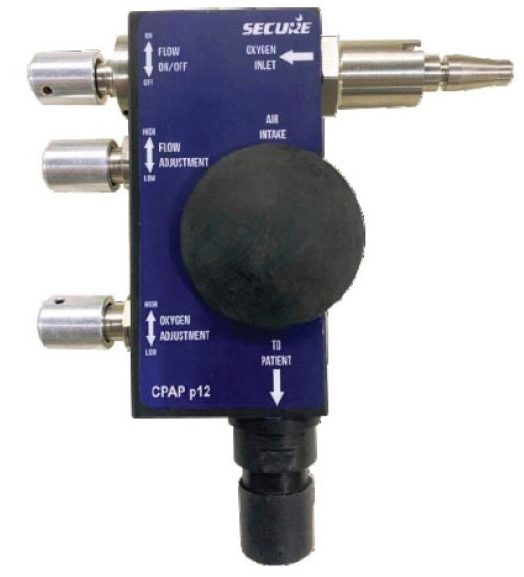
The outbreak of coronavirus (COVID-19) created a global health crisis. Healthcare systems were overwhelmed, and the effective delivery of medical care to all COVID-19 patients became a challenge worldwide. According to the World Health Organization (WHO), 80 per cent of COVID-19 infections were mild or asymptomatic, 15 per cent were severe infections, needing oxygen support, and 5 per cent were critical infections, needing ventilators.
However, a lot of asymptomatic patients also suffered from low blood-oxygen levels, or hypoxia, without even realising it. In many cases, the patients could breathe, but the body lacked oxygen. Hence, oxygen supplementation was critical for COVID-19 patients, when the lungs weren’t able to provide enough oxygen from normal breathing. COVID-19 patients with advanced breathing difficulties needed more oxygen than a standard facemask.
This high positive pressure could be applied through an invasive mechanical ventilator (IMV). However, CPAP (continuous positive airway pressure) therapy proved efficient in cases where additional oxygen was required. The oxygen was delivered under constant pressure through a specialised mask system. There were many CPAP devices available in the market, but they were generally used for sleep apnoea and were not designed for supplementing oxygen; they often couldn’t provide the high flow rates that a COVID-19 patient required. Early application of CPAP p12 could provide a bridge to IMV and was a possible alternative to the ventilator in all but the extreme cases.

Secure’s Oxy CPAP p12 device was specially designed to help COVID-19 patients with breathing difficulties by providing the necessary oxygen supplementation. In line with the Atmanirbhar Bharat package, the device was manufactured locally, in India, under the open license by University College London (UCL) and Mercedes AMG HPP Ltd, UK. It was approved by the Medicines and Healthcare products Regulatory Agency (MHRA) and was being used by 60 hospitals across the UK.
Oxy CPAP p12 acted as an oxygen flow generator that pushed air containing oxygen into the mouth and nose at a continuous pressure, keeping airways open. This increased the amount of oxygen entering the bloodstream. It was a compact, lightweight, robust device that operated without electricity or batteries. It could provide an oxygen concentration of 30-95 per cent to the patient. CPAP allowed the patient to be awake, responsive, and alert. It could be easily managed, with minimum training, and could be easily used at places other than ICUs. Oxy CPAP p12 was reusable and could be used for another patient after proper sanitisation.
To support the medical fraternity and the healthcare ecosystem in those difficult times, Secure leveraged its years of R&D experience in instrumentation and gas flow measurement techniques to design and produce the CPAP p12 device.